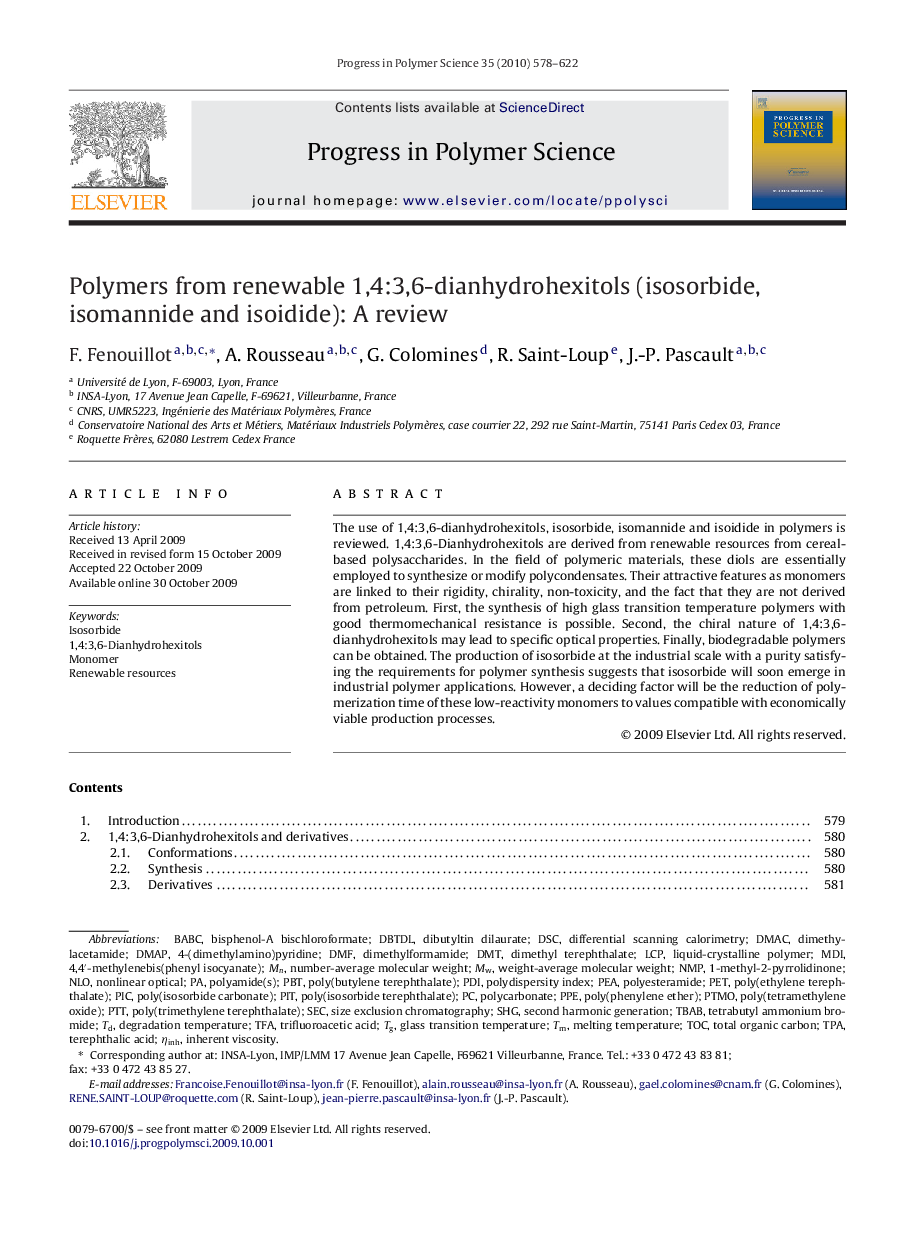| Article ID | Journal | Published Year | Pages | File Type |
|---|---|---|---|---|
| 5208670 | Progress in Polymer Science | 2010 | 45 Pages |
Abstract
The use of 1,4:3,6-dianhydrohexitols, isosorbide, isomannide and isoidide in polymers is reviewed. 1,4:3,6-Dianhydrohexitols are derived from renewable resources from cereal-based polysaccharides. In the field of polymeric materials, these diols are essentially employed to synthesize or modify polycondensates. Their attractive features as monomers are linked to their rigidity, chirality, non-toxicity, and the fact that they are not derived from petroleum. First, the synthesis of high glass transition temperature polymers with good thermomechanical resistance is possible. Second, the chiral nature of 1,4:3,6-dianhydrohexitols may lead to specific optical properties. Finally, biodegradable polymers can be obtained. The production of isosorbide at the industrial scale with a purity satisfying the requirements for polymer synthesis suggests that isosorbide will soon emerge in industrial polymer applications. However, a deciding factor will be the reduction of polymerization time of these low-reactivity monomers to values compatible with economically viable production processes.
Keywords
DMTTBABDMAPtPAPEAPTTPICTFADibutyltin dilauratePDIDMACPBTLCPMDIsHGPPENMPNLODMFDBTDLPtMoSECTOCdimethylacetamideDSC1-methyl-2-pyrrolidinone4-(Dimethylamino)pyridineTrifluoroacetic acidTerephthalic acidIsosorbideTetrabutyl ammonium bromideSecond harmonic generationglass transition temperatureDegradation temperatureMelting TemperatureDimethyl terephthalatedimethylformamidepolydispersity indexRenewable resourcesMonomerNonlinear opticalweight-average molecular weightnumber-average molecular weightInherent viscosityPETPoly(butylene terephthalate)Poly(tetramethylene oxide)Poly(trimethylene terephthalate)Poly(phenylene ether)Poly(ethylene terephthalate)PolyesteramidePolycarbonateLiquid-crystalline polymerDifferential scanning calorimetrySize exclusion chromatographyTotal organic carbonPit
Related Topics
Physical Sciences and Engineering
Chemistry
Organic Chemistry
Authors
F. Fenouillot, A. Rousseau, G. Colomines, R. Saint-Loup, J.-P. Pascault,
